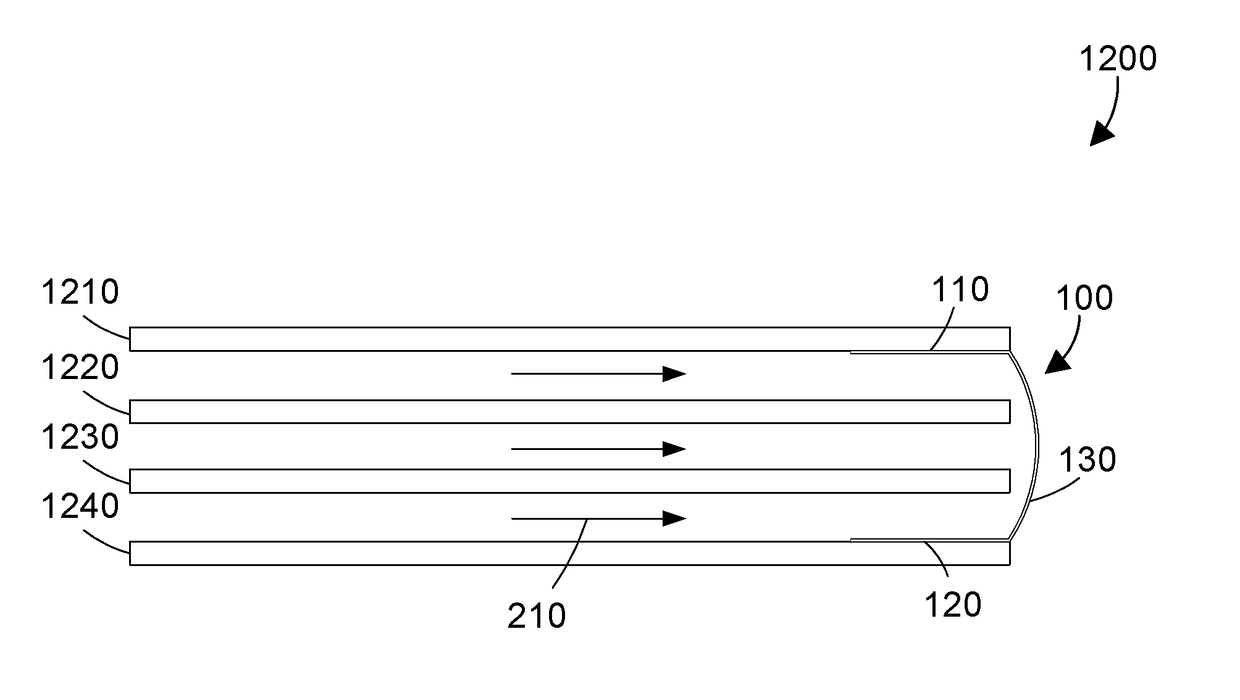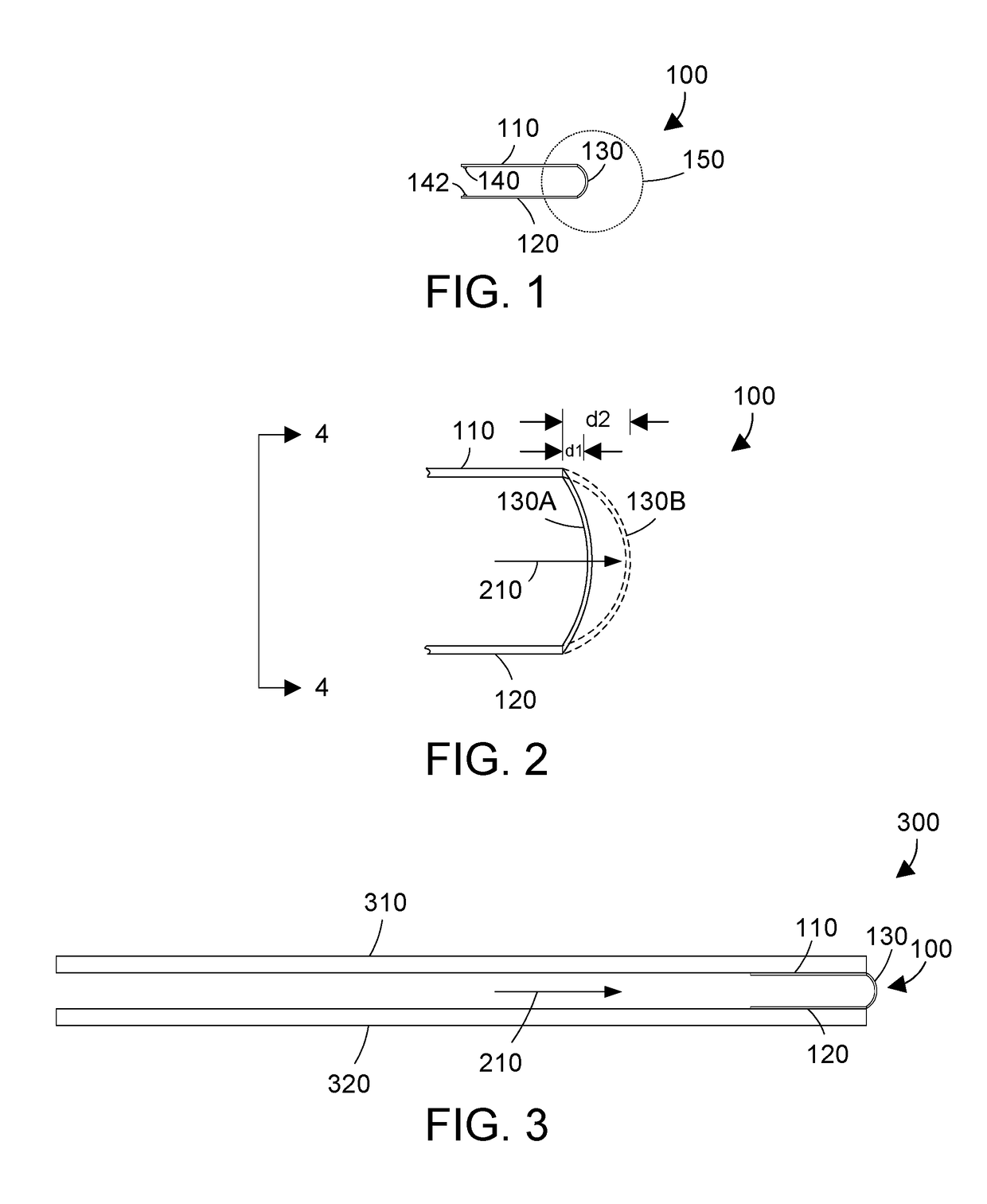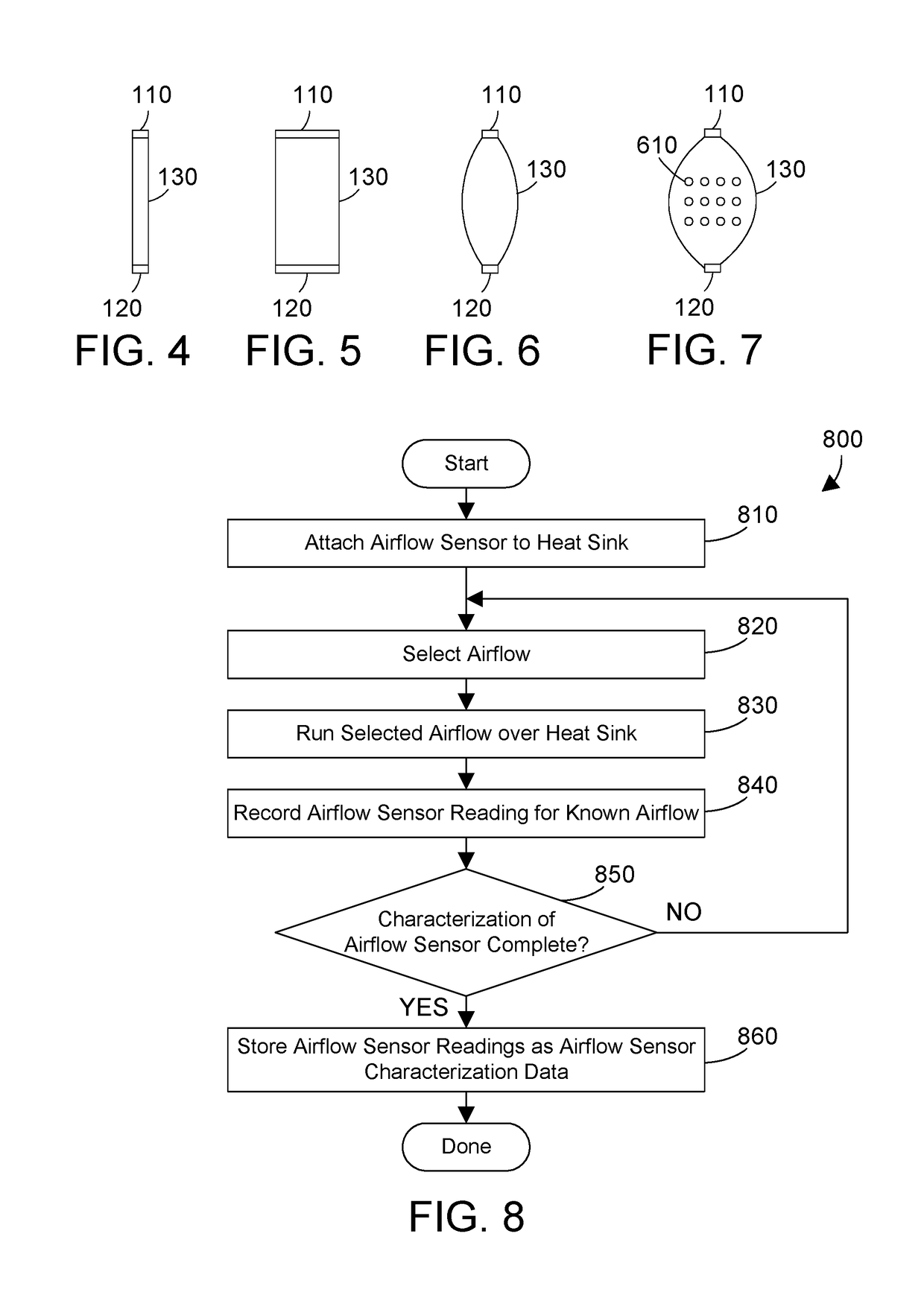Airflow sensor for a heat sink
a technology of airflow sensor and heat sink, which is applied in the direction of instruments, lighting and heating apparatus, measurement devices, etc., can solve the problems of difficult prediction and modeling of the internal environmen
- Summary
- Abstract
- Description
- Claims
- Application Information
AI Technical Summary
Benefits of technology
Problems solved by technology
Method used
Image
Examples
Embodiment Construction
[0018]The disclosure and claims herein relate to an airflow sensor for a heat sink that has a first portion having a first electrical point of contact, a second portion have a second electrical point of contact, and a deformable portion made of an electroactive material electrically coupled to the first and second portions. The deformable portion has first electrical properties measured between the first and second electrical points of contact when there is no airflow and the deformable portion is in a first position, and has second electrical properties different than the first electrical properties when a source of airflow blows air against the deformable portion, thereby causing the deformable portion to extend to a second position farther away from the source of airflow than the first position. The airflow sensor can be incorporated into a heat sink for an electronic component.
[0019]Referring to FIG. 1, an airflow sensor 100 comprises a first portion 110, a second portion 120, a...
PUM
 Login to View More
Login to View More Abstract
Description
Claims
Application Information
 Login to View More
Login to View More - R&D
- Intellectual Property
- Life Sciences
- Materials
- Tech Scout
- Unparalleled Data Quality
- Higher Quality Content
- 60% Fewer Hallucinations
Browse by: Latest US Patents, China's latest patents, Technical Efficacy Thesaurus, Application Domain, Technology Topic, Popular Technical Reports.
© 2025 PatSnap. All rights reserved.Legal|Privacy policy|Modern Slavery Act Transparency Statement|Sitemap|About US| Contact US: help@patsnap.com



